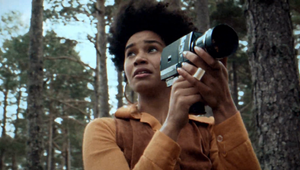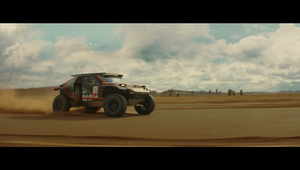
How Renault ‘Pushed It to the Limit’ with Retro Ad Parodies

When they were tasked to promote the new Renault Captur, the team at French agency Publicis Conseil found the stereotypes of car campaign history to be fertile ground too good to ignore. We can all recall car ads that pushed their messages to ludicrous lengths in decades past. This campaign plays with those ridiculous campaigns.
‘Push It to the Limit’ parodies auto ads from the '70s, '80s and '90s, when cars were considered weapons of seduction, power, and ultimate coolness with a mischievous nod. How comedic these notions appear now is a fun reminder of how far society – as well as hybrid car technology – has come.
LBB’s Alex Reeves speaks to the creative team, Antoine Querolle and Clément Palouzier, to find out more.
LBB> What was the brief for this campaign from Renault? How open was it?
Antoine & Clément> To be honest, the new Renault Captur didn’t have major changes compared to the previous model. The main feature remains its E-Tech hybrid engine allowing 40% fuel savings and 80% electric driving in the city.
We wanted to illustrate this promise again with a bold message, following the steps of the previous Captur campaign ‘Use It Wisely’, this is a film with a strong claim: “Even if it’s a hybrid, it’s good not to use it all the time.” But this time, we thought it was not about driving it. It’s about buying it.
LBB> What strategic insights got you from there to the creative brief?
Antoine & Clément> "He has the car; he will have the woman." Yes... That was the kind of tagline that aired in France in the early ‘90s (for a competitor brand). For a long time, marketers used to push the limits a bit too far to sell their products. And the automotive industry used to associate its car models with symbols of power, seduction, or domination. Drawing inspiration from real old Renault commercials, we reimagined and recreated a series of ads to deliver our message with an unexpected twist. In a bold statement, Renault is highlighting its history to better embrace the new societal concerns – compelling, good reasons to buy a car for a new generation: consuming less energy and generating less CO2.
LBB> How did you define the era that you wanted to parody and then how did that turn into a script with all of these particular scenes?
Antoine & Clément> From the beginning, we thought that these ‘limitless’ commercials were particularly related to the ones of the ‘70s, ‘80s and ‘90s. But more than focusing on specific eras we wanted to point out clear wrong reasons to buy a car that we used to see so often: a car for alpha men (restaurant), a weapon of seduction (studio), a symbol of success (golf), a car for men of action (helicopter chase). Once the main themes were found, we had to think about the scenes that would illustrate them. Trying to ‘push the limit’ like they used to do, but knowing at the same time, we would have to respect the rules of our times and also the more restricted legal rules in advertising (which is for the best).
LBB> What details and more specific creative decisions do you think really dialled up the parody?
Antoine & Clément> Art direction was essential in recreating commercials from different decades. Every detail had to perfectly match the period we were representing, including wardrobe (we only used vintage outfits from the depicted eras, which we rented), and props (such as old phones or caddy clubs, and vintage instruments for the band, etc.). Each commercial was conceived as a proper film, receiving all the attention it deserved.
Also, Rodrigo Saavedra, the director, had to consider how he would direct if he was doing it decades ago. This meant using the same camera mechanics they used back then: more static camera shots, panning, crash zooms, and shooting in 4:3 aspect ratio.
The acting itself also had to embody all the biases of the time, with much more exaggerated gestures, direct eye contact with the camera, etc.
LBB> What was the shoot like? What were the big challenges you overcame and most memorable moments?
Antoine & Clément> It was a mix of a lot of fun to re-shoot commercials the old-school way, but also very intense. Because, in fact, we had to shoot not one, but five commercials. Each day, a new film and a new adventure. (But we didn’t have five wrap parties if this was the question).
LBB> Are there any details you’re particularly satisfied with?
Antoine & Clément> We would say the general feedback that came from people outside of the advertising industry after watching the film. We feel that automotive advertising has become more and more formatted than ever. Inspirational rolling shots with a touch of luxury. You can have the feeling that you are actually watching the same commercial from one brand to another. At least, that’s the case in France. So, we are pretty satisfied that this commercial could really pop out and reach a general audience with a bit more of fun and nostalgia.
















